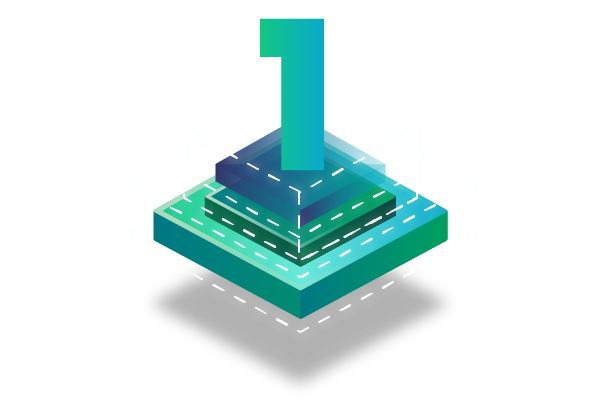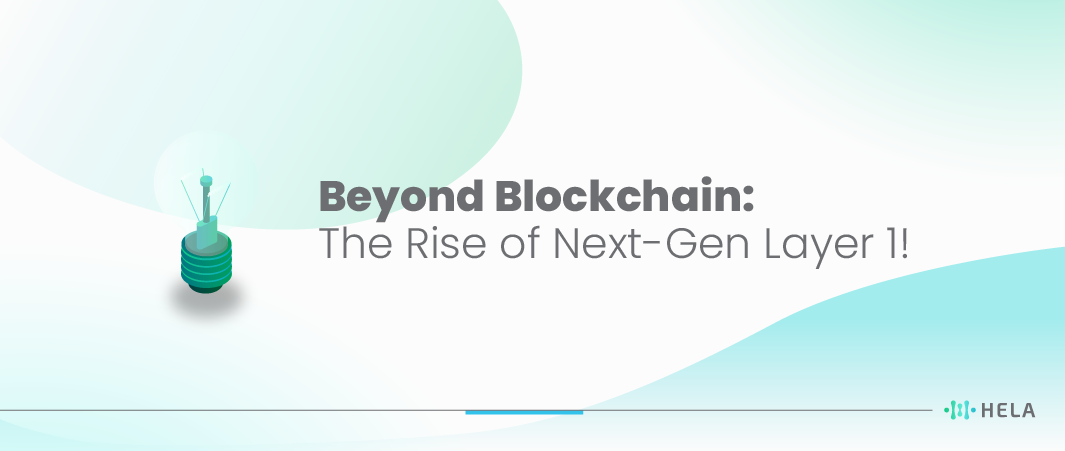The digital realm is on the cusp of a transformative era, with the next-gen layer 1 technologies leading the charge. As we stand at the threshold of 2024, the tech community eagerly anticipates the innovations and breakthroughs that the next-gen layer 1 promises to bring. This article delves into the intricacies of these advancements and sheds light on their potential impact on the broader technological landscape.
Layer 1, often referred to as the foundational layer of blockchain and decentralized systems, has always been the bedrock of digital transactions and smart contracts. However, with the dawn of the next generation, we are not just looking at incremental improvements but a paradigm shift in how these systems function, communicate, and evolve. Let’s embark on this journey to understand the future of layer 1 technologies.
The Evolution and Future of Layer 1 Technologies in the Crypto Market

The landscape of the cryptocurrency market is in a perpetual state of evolution, exemplified by the ongoing clash among Layer 1 solutions. While the notion of Layer 1 is familiar territory for experienced crypto investors, its relentless advancement and refinement underscore the peril of overlooking lucrative investment prospects for those who fail to remain informed. This article delves comprehensively into the historical origins, current status, and the potential trajectory of Layer 1 conflicts, furnishing astute insights and assessments derived from meticulous observation.
In this dynamic milieu, the emergence of “Next-gen Layer 1” platforms adds an intriguing dimension. As these novel solutions vie for prominence, the competition intensifies, spurred by the pursuit of heightened scalability, security, and innovation. For investors, the ability to navigate these shifting tides of Layer 1 battles and the rise of next-gen contenders will be pivotal in seizing opportunities for substantial gains while comprehending the ever-unfolding narrative of blockchain’s evolution.
Also Read: The Top 10 Fastest Layer 1 Blockchain Networks
A Glimpse into the Past: The First Layer 1 Battle

In the dynamic landscape of 2018, when the realm of cryptocurrency was just gaining traction, Ethereum emerged as a prominent player, lauded primarily for its role as a smart contract platform rather than simply a Layer 1 solution. This period marked the inception of various smart contract platforms like Cardano, NEO (often hailed as the “Chinese Ethereum”), Tron, EOS, Monero, and Hela. These platforms, collectively dubbed “ETH Killers,” aimed to tackle Ethereum’s inherent scalability challenges, positioning themselves as the next-gen Layer 1 contenders. However, the passage of time has revealed a nuanced narrative, as some of these contenders have gradually receded from the spotlight, while Ethereum’s resilience endures.
Fast-forwarding to the present day, the term “Next-gen Layer 1” encapsulates the evolution of these platforms. In the ever-evolving crypto landscape, Ethereum’s prominence as a smart contract pioneer during the 2018 period is discernible. Simultaneously, competing smart contract platforms like Cardano, NEO, Tron, EOS, Monero, and Hela entered the scene, striving to alleviate Ethereum’s scalability limitations under the banner of “ETH Killers.” Yet, the landscape’s transformation over time has brought certain platforms to the foreground while others have experienced a gradual fade into obscurity. The journey from 2018 to now illustrates the intricate dynamics of Layer 1 solutions, with Ethereum’s enduring significance casting light on the shifting tides of the crypto realm.
Also Read: Ethereum’s Competitors: Are They Set to Dethrone the Crypto Giant?
The Next-Gen Layer 1

Here are the next-gen Layer 1 technologies that are poised to revolutionize the current landscape:
1. Hela
In envisioning Web 3.0, Hela propels the potential of a Next-gen Layer 1 blockchain protocol that empowers individuals with unparalleled control over their digital assets and data, fostering a profound sense of ownership within the decentralized landscape. This revolutionary approach is underpinned by an ingenious decentralized identity management system, instilling trust and security in transactions while meticulously balancing privacy and transparency to meet regulatory standards. With cutting-edge privacy safeguards, Hela emerges as a strong competitor, akin to Solana, ushering in a new era where user-centricity enriches the digital experience across sectors like finance and supply chain management, catalyzing transformative interactions in the Web 3.0 paradigm.
2. Aptos
Next-gen Layer 1 mainnet, Aptos, has emerged as a pioneering force in the realm of retroactive/airdrop strategies, boasting its innovative Block — STM algorithm coupled with a robust BFT Consensus Mechanism. This groundbreaking platform effectively tackles Ethereum’s long-standing scalability challenges while judiciously avoiding the stumbling blocks that befell Solana. Despite its nascent stage, the burgeoning Aptos ecosystem exhibits remarkable potential, further amplified by significant backing from industry giants like Binance.
3. Sui
Positioned as the next-gen layer 1 solution, Sui’s Monolithic Blockchain methodology and innovative Narwhal-Tusk consensus algorithm have propelled it into the competitive arena of blockchain technology, despite a more subdued mainnet launch compared to Aptos. Bolstered by a development team predominantly sourced from the accomplished DIEM project, Sui brings a formidable wealth of experience to the forefront, solidifying its stance as a strong contender in the ongoing Layer 1 wars.
4. Monad
Monad, the next-gen layer 1 EVM blockchain engineered by the Jump Trading team, is currently in its nascent stages, yet has already captured significant interest owing to its innovative airdrop strategies. A standout feature lies in its unique approach to scalability, achieved through Parallel Execution technology, positioning Monad at the forefront of blockchain advancements.
5. Aleo
Aleo, hailed as the next-gen layer 1 solution, is dedicated to offering decentralized and entirely private applications by harnessing the power of zero-knowledge technology. Currently in its testnet phase, Aleo’s promising trajectory is underscored by substantial support from prominent investment firms, pointing towards a future ripe with potential for innovative advancements in the realm of blockchain and privacy-focused solutions.
6. Celestia
Celestia, hailed as one of the next-gen layer 1 solutions, introduces an innovative modular blockchain framework that distinctively decouples execution, consensus, and data storage functionalities. By implementing this intricate approach, Celestia sets the stage for a potential paradigm shift in Layer 1 technologies, offering a comprehensive solution that promises enhanced scalability, efficiency, and versatility. This innovative design paves the way for a more streamlined and adaptable blockchain ecosystem with the potential to shape the future landscape of decentralized applications and systems.
Conclusion
In the forthcoming crypto market cycle, the spotlight shines brightly on the innovative potential of Next-gen Layer 1 projects. These projects are primed to orchestrate substantial advancements, propelling the crypto landscape into new dimensions. As the ecosystem undergoes continuous evolution, remaining well-informed and up-to-date becomes an indispensable asset for investors aiming to navigate this dynamic terrain effectively.
Amidst the shifting tides, the emerging wave of Next-gen Layer 1 initiatives assumes a pivotal role. These projects are positioned to usher in transformative progress, heralding a remarkable era in the crypto market. Keeping a vigilant eye on these developments is paramount, empowering investors with the insights needed to make informed decisions as the crypto landscape unfolds its next chapter.

Joshua Soriano
I am Joshua Soriano, a passionate writer and devoted layer 1 and crypto enthusiast. Armed with a profound grasp of cryptocurrencies, blockchain technology, and layer 1 solutions, I've carved a niche for myself in the crypto community.
- Joshua Soriano#molongui-disabled-link
- Joshua Soriano#molongui-disabled-link
- Joshua Soriano#molongui-disabled-link
- Joshua Soriano#molongui-disabled-link

